AAC Awareness Month 2015
AAC Awareness Month 2015
Theme: Bringing Us Together
- From British Columbia, Canada:
The second biennial ICEwest conference was held on October 3rd, 2015, in Burnaby, British Columbia. Nineteen adults who use AAC from across BC registered and participated in a very busy day!
The Ontario Breaking the ICE conference was held in Toronto at the same time and the two conferences were able to connect via remote video and audio. Two presentations were shared, including a panel by attendees from both BC and ON who had previously attended ISAAC conferences, and the keynote presentation for both conferences: Putting the Social into Social Media – How to Make Connections Online & in Person given by Glenda Watson Hyatt, in Burnaby.
The Town Hall meeting took place in the afternoon, an event where only people who use AAC systems can participate. The theme for the day was “making social connections” and many people successfully contributed thoughts and experiences on the theme.
The attendees and conference committee wish to thank the following people and organizations for their invaluable support; John Montalbano, Bridges, Aroga, Tobii Dynavox, Saltillo, CAYA, March of Dimes Canada and ISAAC-Canada.
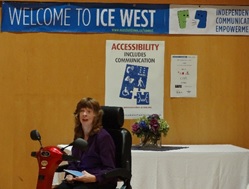 |
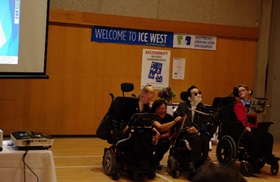 |
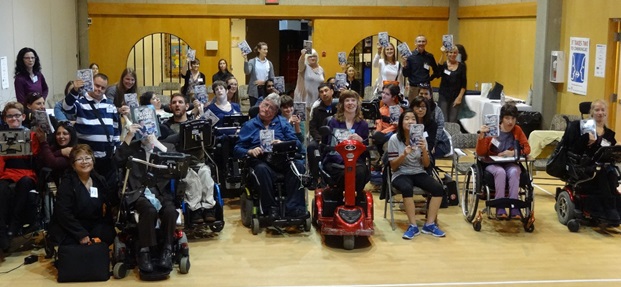
- From ISAAC International:
It has been 30 years since the founding of the Augmentative and Alternative Communication (AAC) journal. To celebrate this milestone, the AAC editors, both past and present, and publisher Taylor & Francis are providing key articles free for a period of 30 days. These releases coincide with International AAC Awareness Month, celebrated each year in October. More information here.
- From Australia:
Each October, Scope celebrates International AAC Awareness Month by encouraging people to get together to share a Silent Morning Tea. Everyone who registers to participate receives resources to download and use in planning their own Silent Morning Tea. Click here for details.
AAC Voice Inc., a non-profit organization in New South Wales, is having a Halloween Picnic to celebrate International AAC Awareness Month. Press release here and flyer here.
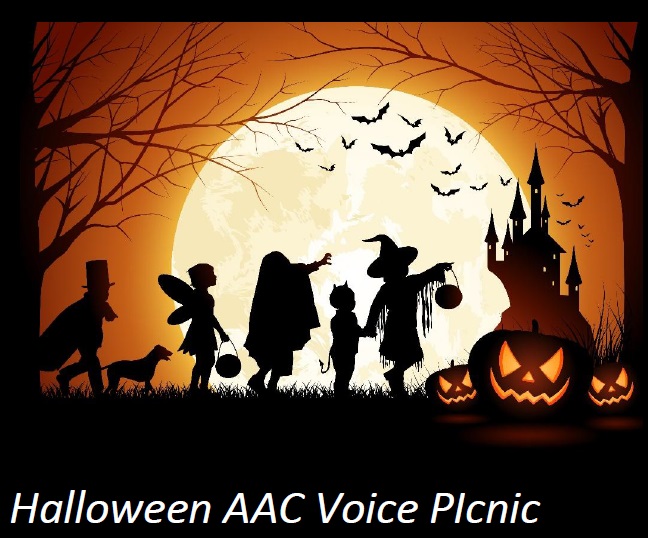
- From Ontario, Canada:
Mohawk College, in the city of Hamilton, Ontario, has launched a new journalism course on producing accessible news content for people with disabilities. Click here to watch a video of the announcement. Submitted by Vic Valentic, ISAAC’s Leadership Chair for People who use AAC.
The Technology Access Clinic (TAC), also in Hamilton, held two events this fall. The first was a fundraising event. A staff barbeque was held at the Chedoke Site of Hamilton Health Sciences. The funds raised will be used to help some of our clients who use AAC to attend ISAAC Conference 2016 in Toronto. The other event was held at the General Site of Hamilton Health Sciences. A display was set up in the front foyer of the hospital with information about TAC and communication devices, for hospital staff and visitors to try using switch, head mouse and eye gaze access. Staff from TAC also had staff and visitors use a communication display or an iPad with Proloquo2Go to order drinks and food at the hospital café located off the front foyer. Both activities were well received by hospital staff and visitors.
- From Croatia:
Students and professors of two faculties from University of Zagreb (Faculty of Education and Rehabilitation Sciences and Faculty of Electrical Engineering and Computing) have contributed to the International AAC Awareness Month within their regular courses. As Croatia has a tradition of drinking coffee, the event was named Silent Coffee. Students communicated with each other and with lecturers by text messages, ICT – AAC Applications, pencil and paper, chalk and board and manual signs. The poster for this event was designed by the Faculty of Graphic Arts. More information here.
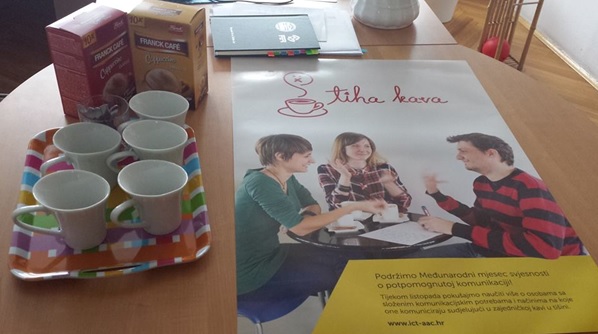 |
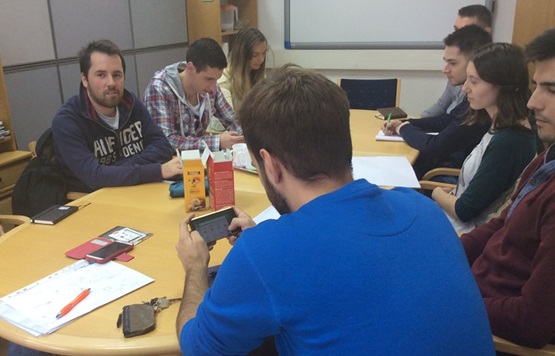 |
- From Egypt:
Yvette Abdel Malek reports that an AAC Awareness Activity for October 2015 was held in Ain Shams University, Psychological Counselling Center – Speech Diploma. Approximately 80 participants from many different areas in Egypt were divided into small groups for workshops using awareness material provided. For more photos from the event, please click here.
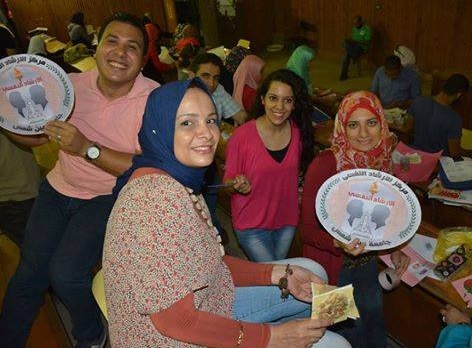
Preparation for the lectures about AAC Awareness Month for university and high school students during the last week of October:
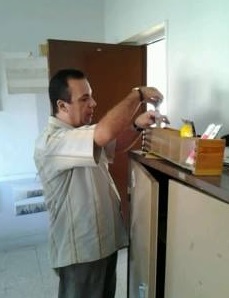 |
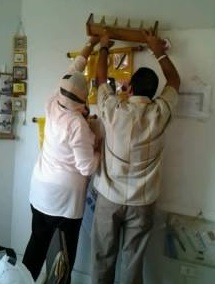 |
- From India:
The Indian Institute of Cerebral Palsy (IICP) is engaged in empowering persons with disabilities to be self-reliant and ensure their equal participation in society. Ankur, the disability rights group of IICP, including a bright group of young people who use AAC, was formed with the same conviction. IICP has been a regular participant in the AAC Awareness Month. This year we decided to showcase the innovative and dynamic space called the Media Lab, supported by the National Resource Centre for AAC (NRCAAC) in IICP.
Ankur members went through intensive workshops to learn about different forms of art and media. They have learned to express their imagination through text, visuals, sound, and animation. High-tech and low-tech AAC systems are used effectively to express creativity. The Media Lab successfully develops literacy, employment, and leisure skills for its members and builds effective peer relationships between people who use AAC and their speaking interpreters. In this year’s in-house exhibition, six poster presentations portrayed short stories and essays. Three PowerPoint presentations featured recorded audio output and sound effects. Paintings and photographs matched the themes chosen by the authors. Another form of display was a stylized pictorial booklet. A highlight was a video by a person who uses AAC, with recorded voice-over, music and sound effects.
The Media Lab exhibition was immensely appreciated by students, trainees, staff members, families and volunteers of IICP, as well as many visitors. On October 27-28, 2015, two staff members are scheduled to conduct a workshop for mainstream and inclusive school teachers: “Core Skills for All: Access and engagement for children with special needs.”
 |
 |
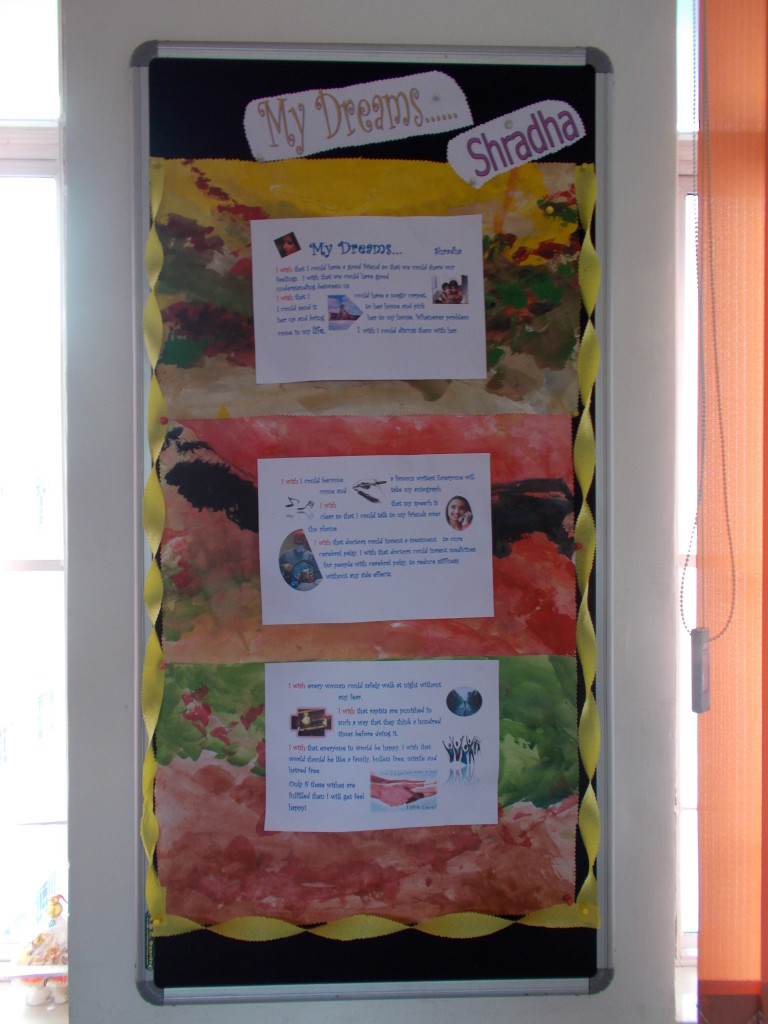 |
- From Scotland: A personal essay submitted by Barry Smith of Ayrshire.
- From Spain:
Irisbond, a Spanish eye tracking device manufacturer, regularly supports and participates in local events, helping to spread the word about the latest AAC technology. One recent event is Jaime Caballero’s Challenge – a swim around Ibiza. As a part of this event, three Irisbond eye tracking devices were donated to the Siempre Adelante association. To view photos of one recipient of an eye tracking device and communication software, click here. Another sporting challenge they support in October is the Desafio Mogena in Getafe (Madrid) on October 17, 2015, which raises funds for people with ALS.
- From ISAAC-Taiwan:
To celebrate International AAC Awareness Month in October 2015, ISAAC-Taiwan has posted two videos and one people prepared by two individuals who use AAC. After posting on their website, an announcement was sent out to all students who study in the field of communication disorders in Taiwan. For more information, click here.
- From ISAAC-UK, Communication Matters:
Communication Matters has been using social media to promote International AAC Awareness Month. CM released an awareness video on October 1st, donated by Charlotte Bruce and her family and friend, as well as Just Because by AAC Voice on October 5th. CM is also taking part in a Scope online Q & A session starting on October 15th.
- From the US:
From Diane Nelson Bryen and ACOLUG (Augmentative Communication On Line Users Group): In honour or International AAC Awareness Month 2015, members of ACOLUG and graduate students taking the “Intergrating Assistive Technology into the Classroom” course with Dr. Bryen, were asked to submit ideas to promote the Communication Bill of Rights. The submissions have been compiled into a booklet, and are available here for download: Promoting the Communication Bill of Rights: What YOU Can Do!
From Judy Bailey: The 7th Annual 24+-Hour AAC Chat on Facebook and Twitter will kick off with a short chat on Wednesday, October 14, from 1:00-5:00 p.m. Eastern Daylight Time USA (EDT). Then the full continuous 24-Hour Chat begins on October 24 at 8:00 a.m. EDT (USA) and continues for 24 hours, ending October 25 at 8:00 a.m. EDT. To participate, join in on Facebook at International AAC Awareness Month to post, read, share information, resources, and advocacy – or post, read, share tweets on Twitter (hashtag: ?#AACChat?).
From Carole Zangari, author of the PrAACtical AAC blog: Carole is planning some posts for AAC Awareness Month and is looking for AAC stories to share from developing areas of the world. Message Carole for more info or to share your story. Deadline: October 12, 2015.
From Jane Farrall, Amanda Hartmann, Jennifer Marden, David Niemeijer and Carole Zangari, in collaboration with AssistiveWare: An “AAC Awareness Month” survey is being conducted to get a better understanding of the state of AAC in the English-speaking world. Surveys are available for people who use AAC, family, and professionals. Deadline: October 22, 2015. We will be sharing the survey results at the end of October so that everyone in the field can benefit from the gained insights.
From Indiana University – Purdue University Fort Wayne (IPFW): A weekend camp known as IPFW AAC Poss-Abilities Theatre Camp for individuals who use AAC is typically held on the second weekend of October. The camp, to be held on October 9-11, is run by IPFW students in the AAC course offered by the Department of Communication Sciences and Disorders. Campers take part in social activities as well as practice for a short play, performed free for the general public. More details here.
From RERC on AAC (a collaborative centre in the U.S. committed to advancing knowledge and producing innovative engineering solutions in AAC): International AAC Awareness Month is celebrated around the world each October. We are pleased to make the following article available FREE:
Light, J., & McNaughton, D. (2012). The changing face of augmentative and alternative communication: Past, present, and future challenges. Augmentative and Alternative Communication, 28, 197-204.